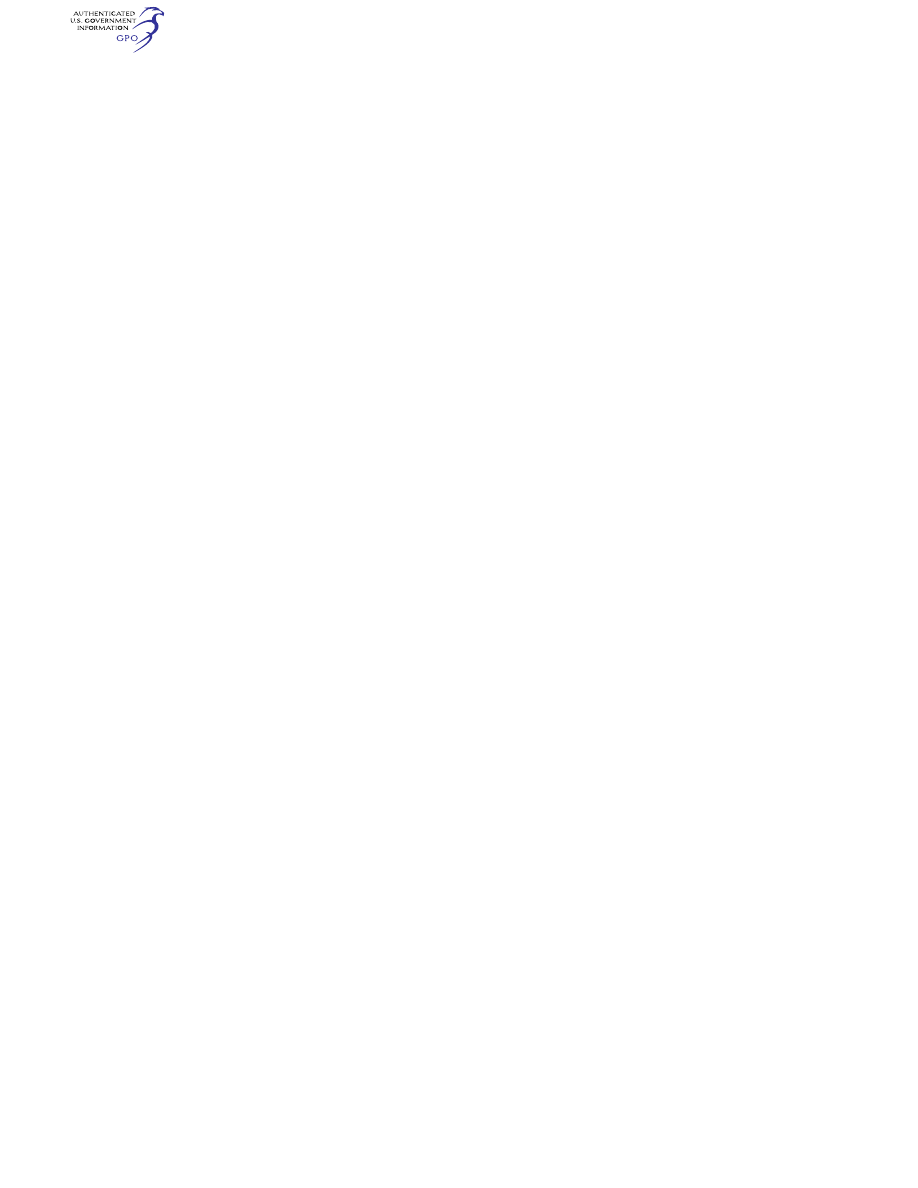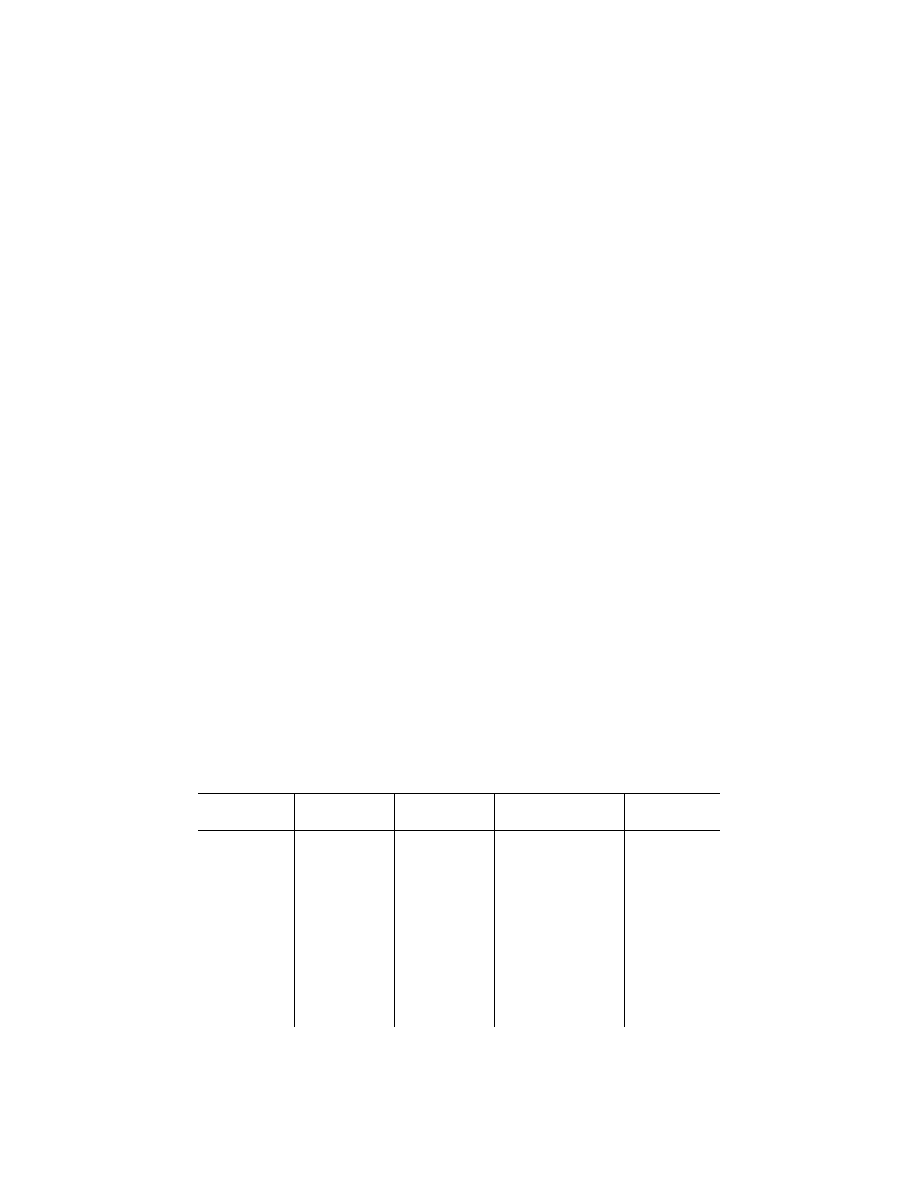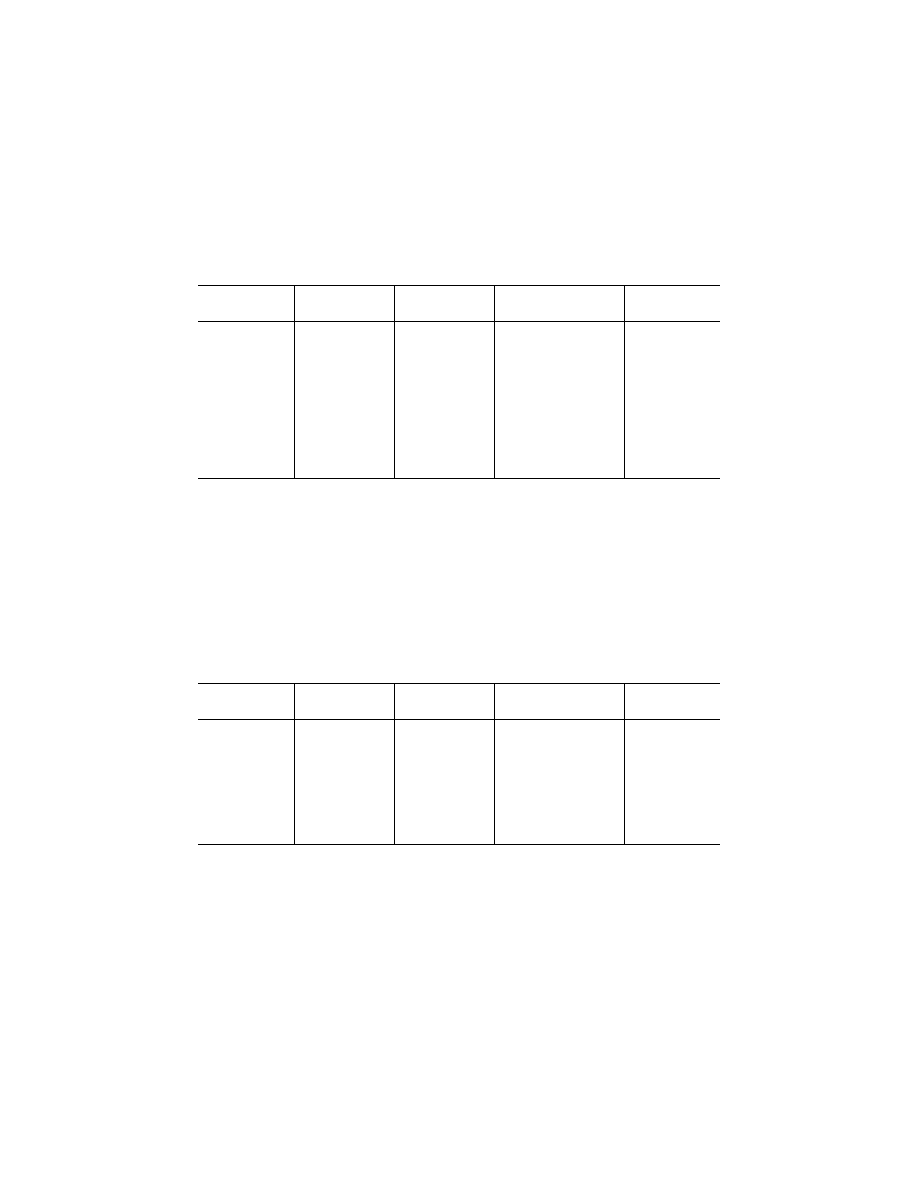
714
14 CFR Ch. I (1–1–24 Edition)
§ 33.68
not be manipulated while the fuel con-
trol device is mounted on the engine
must be secured by a locking device
and sealed, or otherwise be inacces-
sible. All other fuel control adjusting
means must be accessible and marked
to indicate the function of the adjust-
ment unless the function is obvious.
(b) There must be a fuel strainer or
filter between the engine fuel inlet
opening and the inlet of either the fuel
metering device or the engine-driven
positive displacement pump whichever
is nearer the engine fuel inlet. In addi-
tion, the following provisions apply to
each strainer or filter required by this
paragraph (b):
(1) It must be accessible for draining
and cleaning and must incorporate a
screen or element that is easily remov-
able.
(2) It must have a sediment trap and
drain except that it need not have a
drain if the strainer or filter is easily
removable for drain purposes.
(3) It must be mounted so that its
weight is not supported by the con-
necting lines or by the inlet or outlet
connections of the strainer or filter,
unless adequate strength margins
under all loading conditions are pro-
vided in the lines and connections.
(4) It must have the type and degree
of fuel filtering specified as necessary
for protection of the engine fuel system
against foreign particles in the fuel.
The applicant must show:
(i) That foreign particles passing
through the specified filtering means
do not impair the engine fuel system
functioning; and
(ii) That the fuel system is capable of
sustained operation throughout its
flow and pressure range with the fuel
initially saturated with water at 80
°
F
(27
°
C) and having 0.025 fluid ounces per
gallon (0.20 milliliters per liter) of free
water added and cooled to the most
critical condition for icing likely to be
encountered in operation. However,
this requirement may be met by dem-
onstrating the effectiveness of speci-
fied approved fuel anti-icing additives,
or that the fuel system incorporates a
fuel heater which maintains the fuel
temperature at the fuel strainer or fuel
inlet above 32
°
F (0
°
C) under the most
critical conditions.
(5) The applicant must demonstrate
that the filtering means has the capac-
ity (with respect to engine operating
limitations) to ensure that the engine
will continue to operate within ap-
proved limits, with fuel contaminated
to the maximum degree of particle size
and density likely to be encountered in
service. Operation under these condi-
tions must be demonstrated for a pe-
riod acceptable to the Administrator,
beginning when indication of impend-
ing filter blockage is first given by ei-
ther:
(i) Existing engine instrumentation;
or
(ii) Additional means incorporated
into the engine fuel system.
(6) Any strainer or filter bypass must
be designed and constructed so that the
release of collected contaminants is
minimized by appropriate location of
the bypass to ensure that collected
contaminants are not in the bypass
flow path.
(c) If provided as part of the engine,
the applicant must show for each fluid
injection (other than fuel) system and
its controls that the flow of the in-
jected fluid is adequately controlled.
[Amdt. 33–6, 39 FR 35466, Oct. 1, 1974, as
amended by Amdt. 33–10, 49 FR 6851, Feb. 23,
1984; Amdt. 33–18, 61 FR 31328, June 19, 1996;
Amdt. 33–25, 73 FR 48123, Aug. 18, 2008; Amdt.
33–26, 73 FR 48285, Aug. 19, 2008]
§ 33.68
Induction system icing.
Each engine, with all icing protec-
tion systems operating, must:
(a) Operate throughout its flight
power range, including the minimum
descent idle rotor speeds achievable in
flight, in the icing conditions defined
for turbojet, turbofan, and turboprop
engines in Appendices C and O of part
25 of this chapter, and Appendix D of
this part, and for turboshaft engines in
Appendix C of part 29 of this chapter,
without the accumulation of ice on the
engine components that:
(1) Adversely affects engine operation
or that causes an unacceptable perma-
nent loss of power or thrust or unac-
ceptable increase in engine operating
temperature; or
(2) Results in unacceptable tem-
porary power loss or engine damage; or
(3) Causes a stall, surge, or flameout
or loss of engine controllability. The
VerDate Sep<11>2014
09:06 Jun 28, 2024
Jkt 262046
PO 00000
Frm 00724
Fmt 8010
Sfmt 8010
Y:\SGML\262046.XXX
262046
jspears on DSK121TN23PROD with CFR

715
Federal Aviation Administration, DOT
§ 33.68
applicant must account for in-flight
ram effects in any critical point anal-
ysis or test demonstration of these
flight conditions.
(b) Operate throughout its flight
power range, including minimum de-
scent idle rotor speeds achievable in
flight, in the icing conditions defined
for turbojet, turbofan, and turboprop
engines in Appendices C and O of part
25 of this chapter, and for turboshaft
engines in Appendix C of part 29 of this
chapter. In addition:
(1) It must be shown through Critical
Point Analysis (CPA) that the com-
plete ice envelope has been analyzed,
and that the most critical points must
be demonstrated by engine test, anal-
ysis, or a combination of the two to op-
erate acceptably. Extended flight in
critical flight conditions such as hold,
descent, approach, climb, and cruise,
must be addressed, for the ice condi-
tions defined in these appendices.
(2) It must be shown by engine test,
analysis, or a combination of the two
that the engine can operate acceptably
for the following durations:
(i) At engine powers that can sustain
level flight: A duration that achieves
repetitive, stabilized operation for tur-
bojet, turbofan, and turboprop engines
in the icing conditions defined in Ap-
pendices C and O of part 25 of this
chapter, and for turboshaft engines in
the icing conditions defined in Appen-
dix C of part 29 of this chapter.
(ii) At engine power below that which
can sustain level flight:
(A) Demonstration in altitude flight
simulation test facility: A duration of
10 minutes consistent with a simulated
flight descent of 10,000 ft (3 km) in alti-
tude while operating in Continuous
Maximum icing conditions defined in
Appendix C of part 25 of this chapter
for turbojet, turbofan, and turboprop
engines, and for turboshaft engines in
the icing conditions defined in Appen-
dix C of part 29 of this chapter, plus 40
percent liquid water content margin,
at the critical level of airspeed and air
temperature; or
(B) Demonstration in ground test fa-
cility: A duration of 3 cycles of alter-
nating icing exposure corresponding to
the liquid water content levels and
standard cloud lengths starting in
Intermittent Maximum and then in
Continuous Maximum icing conditions
defined in Appendix C of part 25 of this
chapter for turbojet, turbofan, and tur-
boprop engines, and for turboshaft en-
gines in the icing conditions defined in
Appendix C of part 29 of this chapter,
at the critical level of air temperature.
(c) In addition to complying with
paragraph (b) of this section, the fol-
lowing conditions shown in Table 1 of
this section unless replaced by similar
CPA test conditions that are more crit-
ical or produce an equivalent level of
severity, must be demonstrated by an
engine test:
T
ABLE
1—C
ONDITIONS
T
HAT
M
UST
B
E
D
EMONSTRATED BY AN
E
NGINE
T
EST
Condition
Total air temperature
Supercooled water
concentrations
(minimum)
Median volume drop diameter
Duration
1. Glaze ice condi-
tions.
21 to 25
°
F (
¥
6 to
¥
4
°
C).
2 g/m
3
........................
25 to 35 microns ...................
(a) 10-minutes for
power below sus-
tainable level flight
(idle descent).
(b) Must show repet-
itive, stabilized op-
eration for higher
powers (50%, 75%,
100%MC).
2. Rime ice conditions
¥
10 to 0
°
F (
¥
23 to
¥
18
°
C).
1 g/m
3
........................
15 to 25 microns ...................
(a) 10-minutes for
power below sus-
tainable level flight
(idle descent).
(b) Must show repet-
itive, stabilized op-
eration for higher
powers (50%, 75%,
100%MC).
VerDate Sep<11>2014
09:06 Jun 28, 2024
Jkt 262046
PO 00000
Frm 00725
Fmt 8010
Sfmt 8010
Y:\SGML\262046.XXX
262046
jspears on DSK121TN23PROD with CFR

716
14 CFR Ch. I (1–1–24 Edition)
§ 33.69
T
ABLE
1—C
ONDITIONS
T
HAT
M
UST
B
E
D
EMONSTRATED BY AN
E
NGINE
T
EST
—Continued
Condition
Total air temperature
Supercooled water
concentrations
(minimum)
Median volume drop diameter
Duration
3. Glaze ice holding
conditions.
(Turbojet, turbofan,
and turboprop only).
Turbojet and Tur-
bofan, only: 10 to
18
°
F (
¥
12 to
¥
8
°
C).
Alternating cycle: First
1.7 g/m
3
(1 minute),
Then 0.3 g/m
3
(6
minute).
20 to 30 microns ...................
Must show repetitive,
stabilized operation
(or 45 minutes
max).
Turboprop, only: 2 to
10
°
F (
¥
17 to
¥
12
°
C).
.
4. Rime ice holding
conditions.
(Turbojet, turbofan,
and turboprop only).
Turbojet and Tur-
bofan, only:
¥
10 to
0
°
F (
¥
23 to
¥
18
°
C).
0.25 g/m
3
...................
20 to 30 microns ...................
Must show repetitive,
stabilized operation
(or 45 minutes
max).
Turboprop, only: 2 to
10
°
F (
¥
17 to
¥
12
°
C).
....................................
................................................
(d) Operate at ground idle speed for a
minimum of 30 minutes at each of the
following icing conditions shown in
Table 2 of this section with the avail-
able air bleed for icing protection at its
critical condition, without adverse ef-
fect, followed by acceleration to take-
off power or thrust. During the idle op-
eration, the engine may be run up peri-
odically to a moderate power or thrust
setting in a manner acceptable to the
Administrator. Analysis may be used
to show ambient temperatures below
the tested temperature are less crit-
ical. The applicant must document any
demonstrated run ups and minimum
ambient temperature capability in the
engine operating manual as mandatory
in icing conditions. The applicant must
demonstrate, with consideration of ex-
pected airport elevations, the fol-
lowing:
T
ABLE
2—D
EMONSTRATION
M
ETHODS FOR
S
PECIFIC
I
CING
C
ONDITIONS
Condition
Total air temperature
Supercooled water
concentrations
(minimum)
Mean effective particle di-
ameter
Demonstration
1. Rime ice condition
0 to 15
°
F (
¥
18 to
¥
9
°
C).
Liquid—0.3 g/m
3
........
15–25 microns .......................
By engine test.
2. Glaze ice condition
20 to 30
°
F (
¥
7 to
¥
1
°
C).
Liquid—0.3 g/m
3
........
15–25 microns .......................
By engine test.
3. Snow ice condition
26 to 32
°
F (
¥
3 to 0
°
C).
Ice—0.9 g/m
3
............
100 microns ...........................
(minimum) ..............................
By test, analysis or
combination of the
two.
4. Large drop glaze
ice condition (Tur-
bojet, turbofan, and
turboprop only).
15 to 30
°
F (-9 to -1
°
C).
Liquid—0.3 g/m
3
........
100 microns (minimum) .........
By test, analysis or
combination of the
two.
(e) Demonstrate by test, analysis, or
combination of the two, acceptable op-
eration for turbojet, turbofan, and tur-
boprop engines in mixed phase and ice
crystal icing conditions throughout
Appendix D of this part, icing envelope
throughout its flight power range, in-
cluding minimum descent idling
speeds.
[Amdt. 33–34, 79 FR 66536, Nov. 4, 2014]
§ 33.69
Ignitions system.
Each engine must be equipped with
an ignition system for starting the en-
gine on the ground and in flight. An
electric ignition system must have at
least two igniters and two separate sec-
ondary electric circuits, except that
only one igniter is required for fuel
burning augmentation systems.
[Amdt. 33–6, 39 FR 35466, Oct. 1, 1974]
VerDate Sep<11>2014
09:06 Jun 28, 2024
Jkt 262046
PO 00000
Frm 00726
Fmt 8010
Sfmt 8010
Y:\SGML\262046.XXX
262046
jspears on DSK121TN23PROD with CFR


